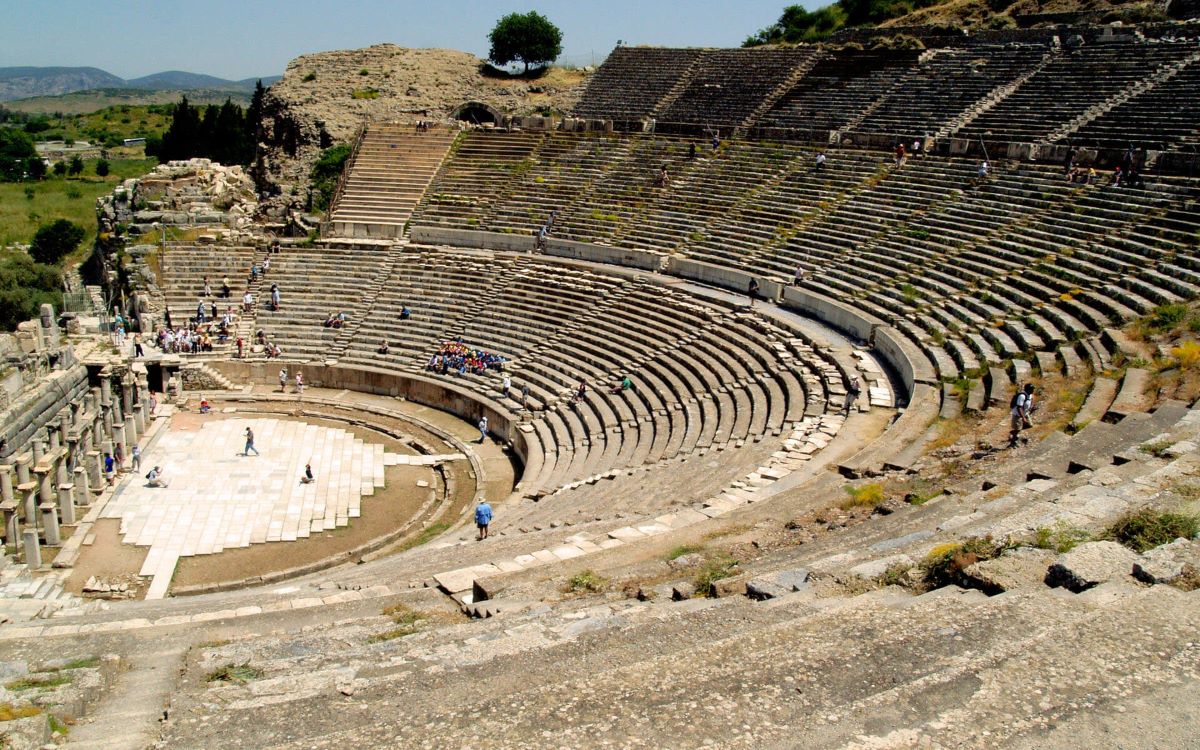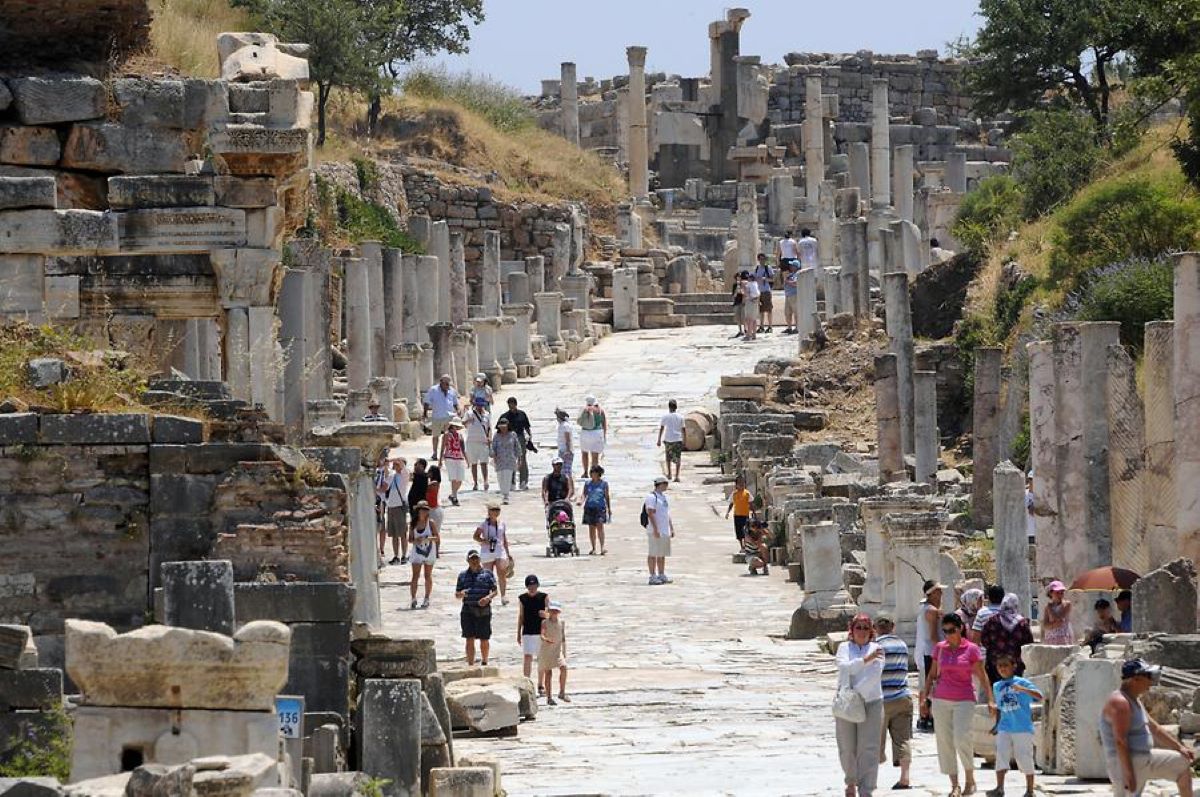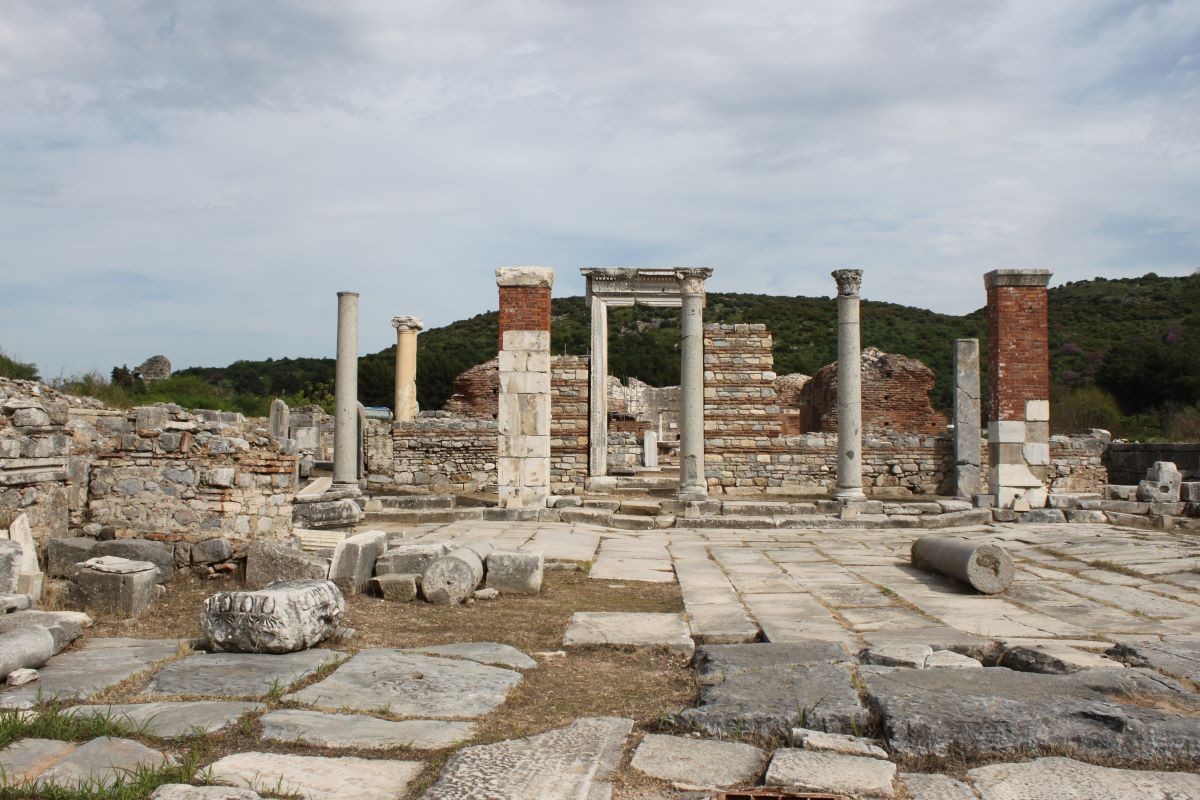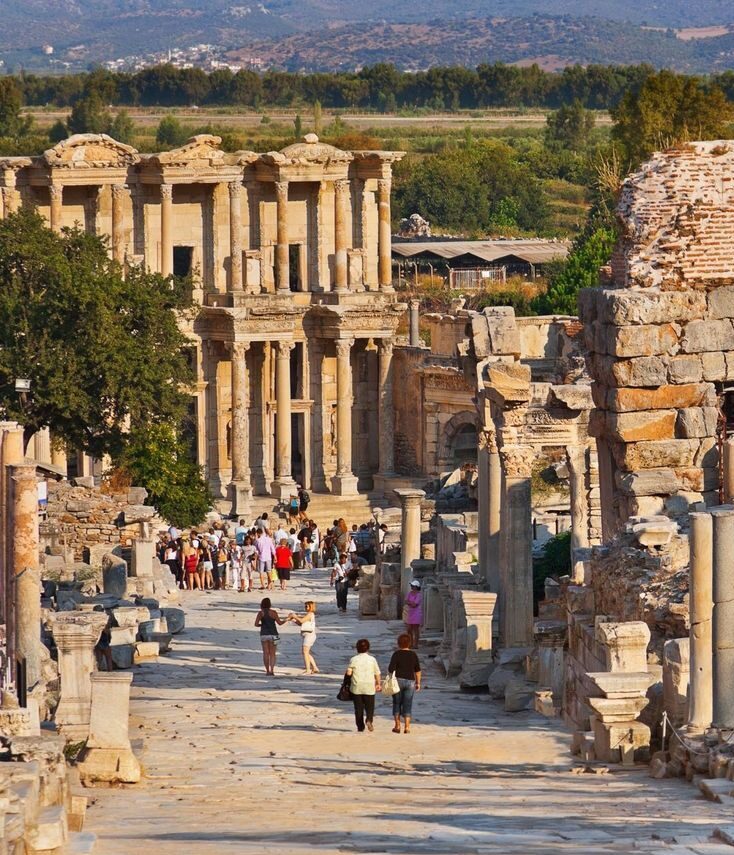The ancient city of Ephesus is a site of remarkable historical significance, with a…

The Grand Theater of Ephesus: A Window into Ancient Greek and Roman Culture
The Grand Theater of Ephesus is one of the most impressive ancient theaters in the world, located in modern-day Turkey. It dates back to the Hellenistic period and is believed to have been constructed around the 3rd century BCE. Over the centuries, it has undergone many changes and renovations, and today it remains an important cultural and historical landmark.
The Grand Theater of Ephesus is a remarkable example of ancient Greek and Roman architecture. Built during the Hellenistic period around the 3rd century BCE, the theater was expanded and renovated during the Roman period with the addition of impressive marble statues and reliefs. The theater was built to seat around 25,000 people and has an impressive semicircular seating arrangement that allowed for exceptional acoustics and sightlines. During its heyday, the theater was an important center of artistic and cultural activity, hosting a variety of performances and events.
The construction of the Grand Theater of Ephesus is believed to have taken place during the Hellenistic period, around the 3rd century BCE. The theater was built into the side of a hill, with a seating capacity of around 25,000 people. Over time, the theater was expanded and renovated during the Roman period, with the addition of impressive marble statues and reliefs.
The design of ancient Greek and Roman theaters was heavily influenced by the desire to create an immersive and engaging experience for spectators. Theaters were often built on hillsides, with semicircular seating arrangements that allowed for excellent acoustics and sightlines. The Grand Theater of Ephesus is no exception, with a semicircular seating area that curves around the stage, providing clear sightlines to the stage from all angles.
The construction of the Grand Theater of Ephesus required the use of thousands of workers and a large quantity of building materials. The primary materials used were limestone and marble, which were quarried locally. The limestone was used for the foundation and structural components of the theater, while the marble was used for the decorative elements, such as the seats, columns, and facade.
The theater’s historical significance lies in its unique architecture and design, which have influenced the construction of theaters throughout history. It is also a testament to the skill and creativity of ancient architects and builders, and offers insight into the social and cultural practices of past societies.
The Grand Theater of Ephesus is a remarkable example of ancient Greek and Roman architecture. The theater is built into the side of a hill, with a semicircular seating area that curves around the stage. The design of the theater is intended to amplify sound and provide clear sightlines to the stage from all angles.
The seating area is divided into three main sections, with the lower and middle sections separated by a walkway. The seats are made of marble, and were arranged to accommodate up to 25,000 spectators. The stage of the theater is also impressive in its design. It is framed by a proscenium arch, which was decorated with statues and reliefs during the Roman period. The stage is flanked by two tall columns, and is elevated above the orchestra pit, which was used for musical accompaniment during performances.
The Grand Theater of Ephesus is renowned for its exceptional acoustics and sightlines. The design of the theater was carefully planned to ensure that every seat had a clear view of the stage and that the sound could be heard clearly by all spectators. The acoustics of the theater were achieved through a combination of the semicircular seating arrangement and the design of the orchestra pit and stage. The sound was projected evenly throughout the theater, allowing for clear and immersive performances. The sightlines of the theater were also meticulously planned, with the slope of the seating area and the elevated stage providing unobstructed views of the performances from all angles. The theater was designed to create an immersive and engaging experience for the audience, and its exceptional acoustics and sightlines contributed to its reputation as one of the most impressive theaters of its time.
The Grand Theater of Ephesus has been associated with many important historical figures and events throughout its long history. The Roman general Mark Antony is said to have given a speech in the theater during his campaign against the Parthians in 37 BCE. The Apostle Paul is also said to have preached in the theater during his travels to Ephesus in the 1st century CE.
In addition, the theater was the site of several important events during the Byzantine and Ottoman periods. The theater was used as a fortress during the Byzantine period, and was the site of a battle between the Ottomans and the Knights of Rhodes in the 15th century.
The Grand Theater of Ephesus is a remarkable testament to the ingenuity and creativity of ancient Greek and Roman architects and builders. Its impressive size, exceptional acoustics, and meticulous sightlines have made it one of the most significant theaters of its time. The construction of the theater played an important role in the cultural and social practices of past societies, and its evolution over time reflects the changing priorities and values of those societies. The Grand Theater of Ephesus remains an important cultural and historical landmark, drawing visitors from around the world to explore and appreciate its unique beauty and historical significance.




This Post Has 0 Comments